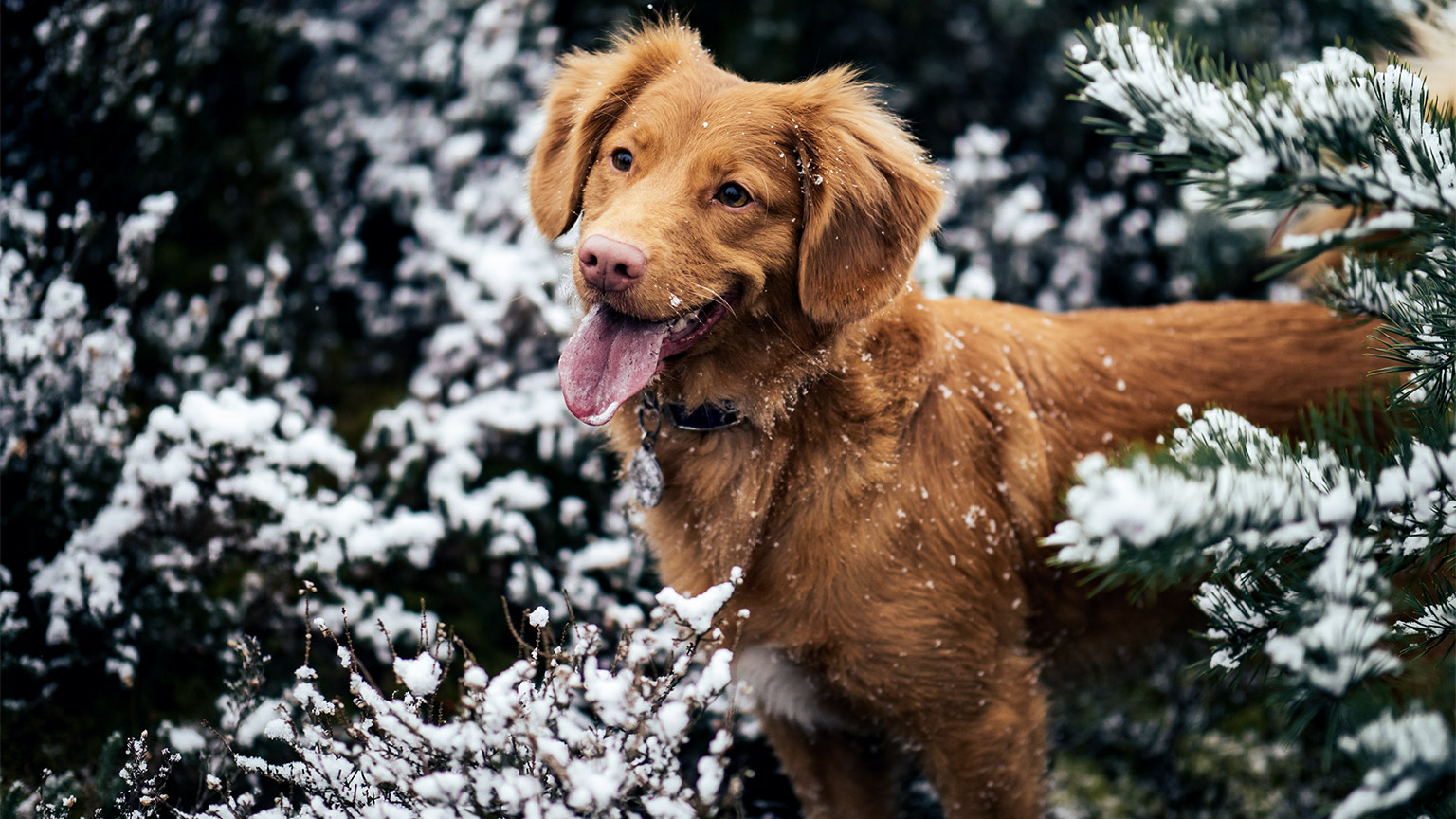Animals that enter your care facility must be correctly identified to distinguish them from others within their species/breed. Some general identifiable characteristics that can be used as part of your record-keeping practices include:
- Age, sex (gender), and size (weight, height) of the animal - You may have to guess the animal's age to see if it is a stray or wild/native.
- Coat, skin colours, texture and markings - Certain species and breeds will have common coats and skin colourings; however, individual animals may have unique characteristics such as markings, patterns, and/or permanent scars.
- Eye colour - This might be breed-specific; however, some animals have different eye colours in the left/right eyes, which are unique.
- Nail colour - For example, dogs may have dark or light nails (claws).
- Microchip, Ear Tags, Tattoos, Leg Bands, Collars, branding / Tags - These will apply if the animal is owned.
- Movement and behaviour - Physical characteristics such as chronic limping.
In addition to these generic identifying characteristics, there are common species and breeds that you are likely to encounter, and you should be familiar with their distinguishing characteristics.
Watch
Next, watch this quick video on becoming an animal care worker.
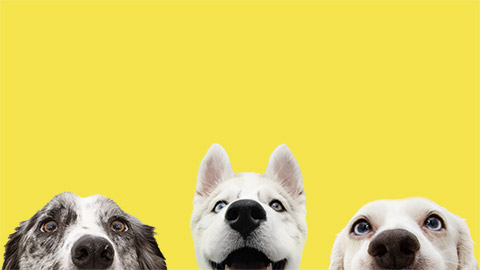
The animal kingdom classification identifies and understands how all living organisms are related. Species are grouped based on shared characteristics.
There are mainly 8 categories of classification that define every species. The primary method of animal classification is:
Domain
This is the top level of classification. This level categorises life in the most general way. Eukarya is the domain for all animals and other living organisms, such as plants and fungi.
Kingdom
There are six different animal kingdom classifications. The kingdom for animals is Animalia.
Animalia
This kingdom includes all living and extinct animals. This kingdom is classified as complex multi-celled organisms that do not produce their food.
Example: Tigers, dolphins, dogs and humans!
Phylum
There are seven phyla (phylum - singular; phyla - plural). All animal species will fall into one of these groups. The seven animal phyla are:
-
Porifera
Aquatic invertebrates are known as sponges. These can be found in every ocean.

-
Cnidaria
Aquatic animals that are diploblastic. Cnidaria can be found in freshwater and marine environments, but most commonly in marine environments. They include over 11,000 species, including coral, jellyfish, and anemones.

-
Platyhelminthes
Flatworms lack any respiratory or circulatory systems. Most Platyhelminthes are parasitic, including tapeworms and flukes.
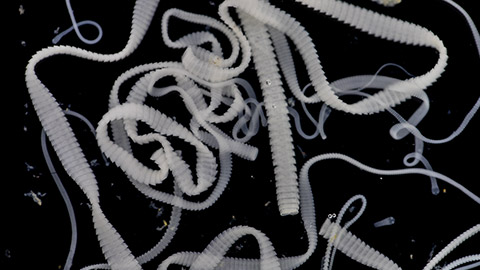
-
Annelida
Segmented and symmetrical worms. These worms are more complex than Platyhelminthes. They have a nervous system, a respiratory system and sense organs. Examples of these worms include the common earthworm and leeches.
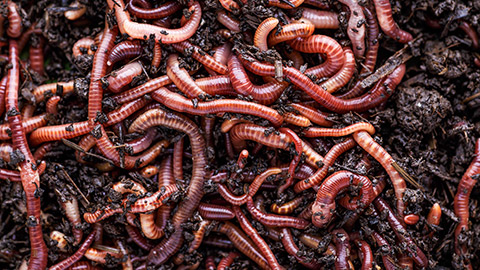
-
Mollusca
This is the largest aquatic phylum. This phylum contains invertebrates with soft, unsegmented bodies. This includes clams, mussels, and snails.

-
Arthropoda
Arthropods are invertebrates with an exoskeleton and segmented bodies. Well-known arthropods are insects (such as butterflies), crustaceans (such as shrimp) and arachnids (such as scorpions).

-
Chordata
The phyla Chordata contain animals that develop a notochord (a cartilaginous skeletal rod that supports the body) during embryonic development. Chordates are also known as vertebrates. Vertebrates include dogs, horses, birds, and us humans!
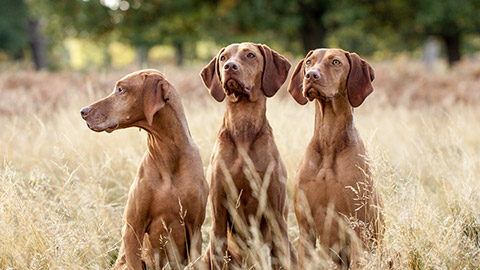
Class
Animal classes are even smaller groups. The Chordata phylum is divided into these classes. There are 7 classes. These are:
- Agnatha (Jaw-less fish)
- Chrondrichtyes (Cartilaginous fish)
- Osteichthyes (bony fish)
- Amphibia (Amphibians)
- Reptilia (Reptiles)
- Aves (birds)
- Mammalia (Mammals)
Order
The order divides members of a class into sub-groups. Specific and definitive features and common ancestry determine sub-groups or order. The common name for an animal generally comes from its order rank. For example, primates are commonly referred to as monkeys, and canines are commonly referred to as dogs.
Animal Family
This is a more specific grouping. It divides members of an order into logical groups of related organisms. Animal family names usually end in ‘ae.’ For example, the family name for canines is Canidae. The family name of Felines is Felidae.
Genus
The genus divides family members into smaller groups of closely related organisms. Typically, all members of a genus share a single common ancestor. Genus names form the first part of an organism’s scientific name. A genus should always be put in italics.
Species
This is the most specific classification. Species are determined by an exact, specific group of organisms that are identical in terms of morphology. Offspring can only be produced from members of the same species. Species name forms the second part of an organism’s scientific name. The species should also always be put in italics.
Here is an example of animal classification for you to view.
Learning Activity
Choose an animal and determine the animal classification. You need to include:
- Domain
- Kingdom
- Phylum
- Class
- Order
- Family
- Genus
- Species
Domain – Eukaryota
Kingdom – Animalia
Phylum -Chordata
Class – Mammalia
Order –Carnivora
Family – Canidae
Genus – Canis lupus
Species – Canis lupus familiari
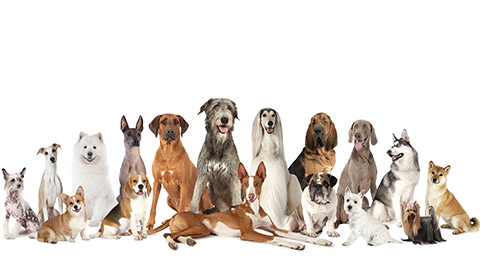
There are currently around 180 breeds of domestic dog (scientific name Canis familiaris shortened to Canine within the animal care industry) recognised in Australia, although this number is more like 350 if all breeds recognised by the World Canine Association are included.
To make recognising and selecting (and judging) breeds easier, dog breeds are further classified into 'groups' based on similarities such as temperament and physical characteristics or the 'job' they were bred for.
Dog Breed Groups
There are seven (7) groups recognised in Australia.
- Toy breeds
- Terriers
- Gun dogs
- Hounds
- Working dogs
- Utility dogs
- Non-sporting dogs
Toy Breeds
- Bred down in size to create a convenient pet.
- Primarily companion animals.
- Examples include Australian Silky Terrier, Cavalier King Charles Spaniel, Chihuahua, Maltese, Pomeranian, and Pug.
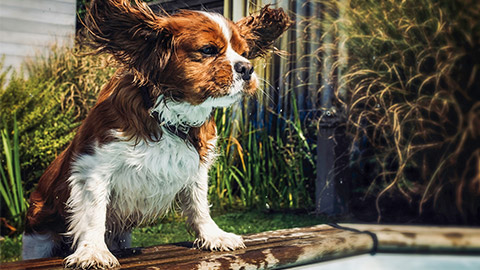
Terriers
- Initially bred to hunt vermin.
- Usually energetic and renowned for their bold, fearless temperament.
- Examples include the American Staffordshire Terrier, Fox Terrier, Jack Russell Terrier, Staffordshire Bull Terrier, and West Highland White Terrier.

Gun Dogs
- Bred for their detection and retrieval skills used in hunting.
- Divided into three categories: Retrievers, Pointer / Setters, and Flushing Dogs.
- Examples include Golden Retriever, Labrador, German Shorthaired Pointer, English Setter, and English Cocker Spaniel.
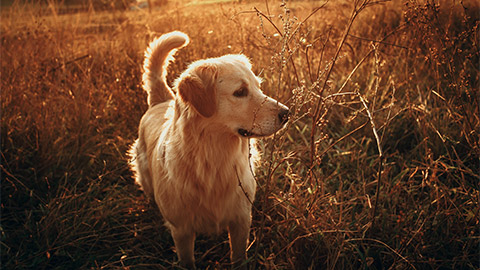
Hounds
- Selectively bred for their hunting/tracking drive. Used by clubs and hunters to hunt game.
- Divided into two categories: Sighthounds and Scent hounds.
- Examples include Greyhound, Whippet, Beagle, Dachshund, and Rhodesian Ridgeback.
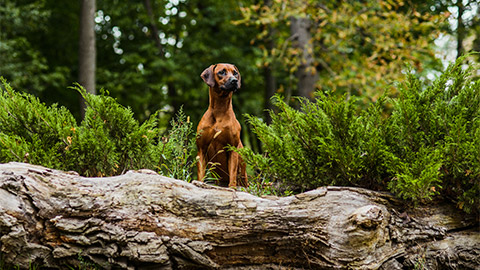
Working Dogs
- Bred for their herding and protective instincts.
- Not recommended for families with small children.
- Examples include Australian Cattle Dog, Australian Kelpie, Australian Shepherd, Border Collie, Collie, Corgi, and German Shepherd.

Utility Dogs
- Selectively bred to perform a specific task such as sledding, guarding, or rescue.
- Individual breeds do not share common characteristics.
- Examples include: Akita, Alaskan Malamute, Boxer, Doberman Pinscher, Rottweiler, St. Bernard, Schnauzer and Siberian Husky.
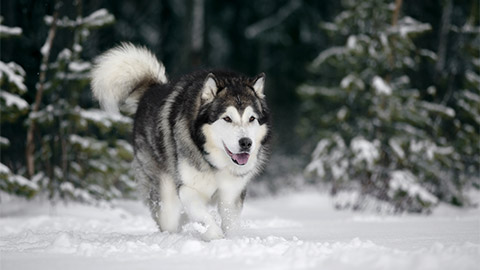
Non-Sporting Dogs
- Speciality and exotic dog breeds bred for a specific physical characteristic.
- Individual breeds do not share common characteristics.
- Examples include Boston Terrier, British Bulldog, Dalmatian, Great Dane, and Poodle.
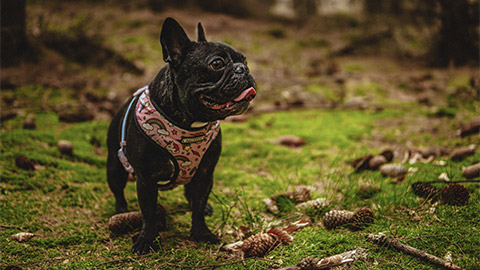
Of course, many dog breeds are interbred either deliberately or by accident. Deliberately cross-bred dogs are also known as ‘designer dogs’, and are often given hybrid names derived from both the parent breeds. Whilst not officially recognised by international associations, they are increasing in popularity.
Often, designer dogs are bred for a particular trait that one of the breeds possesses, like a lack of fur shedding (poodles). Alternatively, dogs that are accidentally cross-bred are known as ‘mongrels’. They generally have less commercial value than purebred or designer-bred dogs but are thought to be less susceptible to genetic health problems associated with purebred inbreeding.
Dog Coat Types and Colours
Many different coat types and colours are seen on different breeds of dogs; some breeds may have both long and short-haired types or smooth and wire-haired types. Some common terms you may hear when referring to the type of coat a dog has are outlined below.
- Long-haired (long coated) - Example: Maltese.
- Short-haired (smooth coated) - Example: Doberman.
- Wire-haired (coarse, wiry coat, usually fairly long) - Example: Irish Wolfhound.
- Curly coated - Example: Curly Coated Retriever
- Double coat (rough-coated) - having a thick, soft undercoat for insulation, with longer guard hairs providing protection – Example: Siberian Husky.
Dogs can also be identified by their coat colour, which is often breed-specific. For example, Labradors are often called golden, chocolate, or black. Some dogs may combine two colours in a recognised pattern. For example, harlequin is used to describe white dogs with black splotches or brindle, a mix of a darker colouring (usually black) with a lighter colour (usually brown/tan/gold), creating a striped appearance.
Some issues you may come across when dealing with dogs can include the following:
- Various diseases like canine distemper, parvovirus, kennel cough, rabies and Lyme disease
- Injuries and Ailments like arthritis, hip dysplasia, skin allergies, ear infections, dental diseases, fractures, ligament tears and damage, cuts, lacerations and heatstroke
- Other health impacts that they can encounter include obesity, anxiety, behavioural issues that can stem from lack of socialization and exercise
WATCH
Watch the next couple of videos explaining and exploring dogs and dog breeds.
Domain – Eukarya
Kingdom – Animalia
Phylum -Chordata
Class – Mammalia
Order –Carnivora
Family – Felidae
Genus – Felis
Species – Felis Catu

Although purebred cats are becoming more common, the most common breed of a cat kept as a pet in Australia is still the Domestic, a cat of mixed or unknown genetic history.
According to the International Cat Association, there are currently around 60 breeds of domesticated cats (scientific name Felis catus within the animal care industry, the species is called Feline) recognised internationally, with another 10-20 breeds, including the Domestic, that are not officially recognised for showing purposes.
Unlike dogs, cats were not commonly bred for a specific purpose but more for specific physical characteristics seen as appealing or personality traits that made them more compatible companions. Before selective breeding, survival was based entirely on natural selection. Geographical location has influenced the type of cat you are more likely to come across, with Western countries tending to be more heavy-set, rounded cats and Eastern countries having more long, lean, angular cats.
Cats can be described using their coat length, colour, and pattern; domestic cats, in particular, are further grouped by length. The three major coat type classifications are:
- Short-haired (SH) - Relatively short hair (usually <2.5cm) over the entire body. It can be smooth (fine) or ‘fluffy’ (thick). Domestic cats in the category are called Domestic Shorthair (DSH).
- Medium-haired (MH) - Relatively short hair over the trunk, longer hair around the mane, tail, and legs (feathers). Domestic cats in the category are called Domestic Medium hair (DMH).
- Long-haired (LH) - Longer hair (>2.5cm) over the entire body. Domestic cats in the category are called Domestic Longhair (DLH).
Three dominant colours occur in varying degrees: black, red, and white (although white technically lacks any other colour). The black colour includes brown and chocolate and dilute versions such as grey, blue, and silver. The red colour includes ginger, orange, and dilute versions such as cream. Red and black combinations create colours such as lilac and fawn.
Coat colours play a big part in identifying coat patterns, with many colour combinations having specific names. The most common coat patterns are:
- Tabby - Striped pattern, can be black/brown, ginger, or a dilute version. Has an 'M' shape on the brow.
- Tortoiseshell - Combination of black, red, and white in patches. Always female.
- Bi-Colour - Any solid colour and white.
- Colour Point - Also known as 'pointed'. Pale colour on the body with darker points at the extremities, i.e. nose, ears, feet & tail.
In the following slideshow of the various breeds, take note of the different coat types and colours:
- Birman
- Siamese
- Scottish Fold
- Russian Blue
- Ragdoll
- Persian
- Maine Coon
- Domestic
- Devon Rex
- Burmese
- British Shorthair
- Bengal
WATCH
Next, watch this video explaining the different cat species.
Some key considerations to think about when having a Cat as a pet include:
- Safe and enriched Environment for the cats to explore. These may include enrichment materials like scratching posts, climbing gyms and hiding spots. Cats should get access to the outside environment, whether it be a safe enclosure or supervised.
- Cats need access to exercise, this could be through enrichment materials, chances to play, mimic hunting behaviours like feather toys, lasers and cat toys.
- Whilst Cats are very independent, they still do require some social interaction with humans and other animals
Domain – Eukaryota
Kingdom – Animalia
Phylum -Chordata
Class – Aves
Order –Passeriformes
Family – Turdidae
Genus – Turdus
Species – Turdus Migratoriou
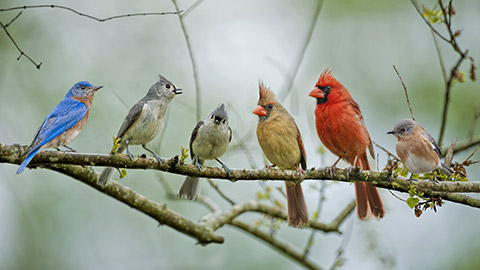
Several features can be used to identify birds, these include:
- feather colour and type
- size
- beak shape
- foot type
- gape
- tongue type
Most of the birds commonly kept as pets are as follows.
Passerines
Birds in this order have three forward-facing toes and one backward-facing toe and are often known for their song-singing abilities. This group includes birds such as canaries and finches.
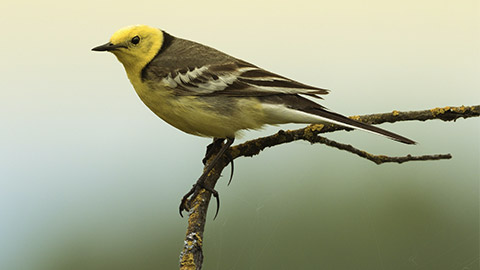
Psittacines
This order includes parrots such as budgerigars and cockatoos. The most recognisable characteristic of birds in this group is their sturdy curved bill/beak. They also have two forward-facing toes and two backward-facing toes.

Watch
The next video explains some of the most popular bird breeds.
Key consideration for housing Birds
- Housing: The birds need to have access to a decent size cage/ avery depending on the size and amount of birds. The cage/Avery needs to have space to move around and engage in enrichment activities like perches, branches, sticks, toys, feeding stations, etc.
- Social-emotional: Birds are highly social and enjoy being social with their owners and other birds. Lack of social interaction can cause behavioural issues.
- Exercise: The birds enclosure needs to have stimulation experiences to allow them to forage, climb, problem-solve. Exercise in a safe environment outside of their enclosure is also beneficial to them.
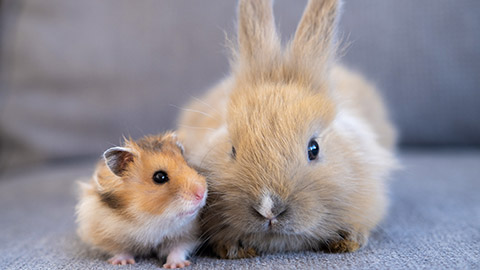
Pocket pets refer to smaller animals kept as pets, including mice, rats, rabbits, and guinea pigs.
Mice
Some people may keep native species of mice. However, most mice kept as pets are fancy strains of the house mouse. Although they could be hairless, Manx (tail-less), or long-haired, most mice are identified by their colour and gender.
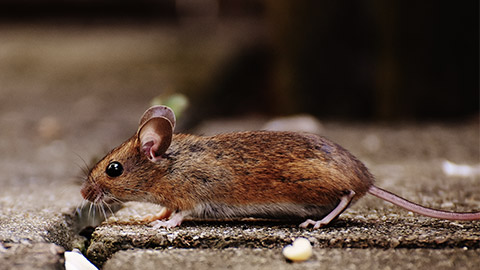
Rats
As with mice, native rats are less common than fancy strains of the brown rat. Some particular colour combinations, patterns, and features have their own names, such as the Hooded Wistar and the Dumbo, but most are recognisable by their colour and gender.
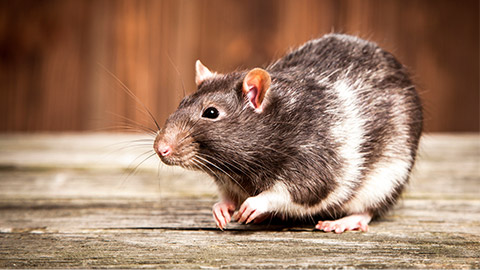
Guinea Pigs
Most commonly identified by their coat colour and type. The three most common coat types are longhaired, shorthaired, and coarse-coated, and the main colours seen are black, brown, white, or a combination thereof.
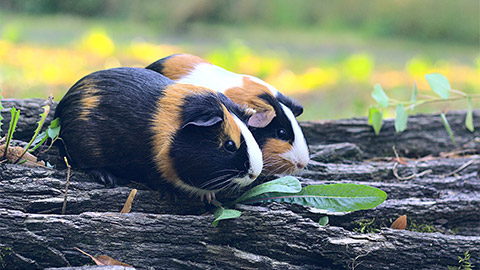
Rabbits
Most pet rabbits originally descended from the European rabbit, although it may not be apparent in some of the many varieties available today. Rabbits can be identified by their breed, as well as their coat type and colour. The most common varieties encountered are the Dwarf (miniature), the Lop (drooping/hanging ears), the English (most similar to the original European), and the New Zealand White (commonly recognised as laboratory rabbits). Giant breeds of rabbits are also becoming relatively well known.
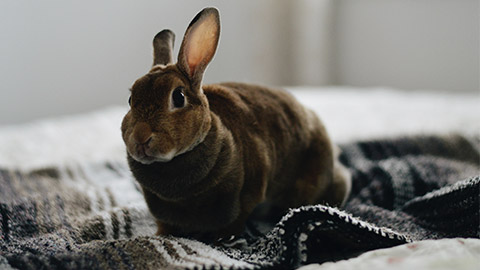
Note:
In Australia, the legal status of rabbits varies significantly between states due to their history and impact.
Queensland: STATUS: Pest - In Queensland, rabbits are classified as a "pest" under the Biosecurity Act 2014. Due to their destructive impact on agriculture and the environment, keeping rabbits as pets is illegal without special permits. Strict controls are in place to prevent the spread and breeding of rabbits, as they are known to cause significant ecological damage.
New South Wales: STATUS: Companion Animal- In New South Wales, rabbits are legally kept as pets and are considered companion animals. There are no state-wide restrictions against owning rabbits, and they are commonly found as pets. However, pet owners must still manage them responsibly to prevent escape and potential feral populations.
The difference in laws between QLD and NSW highlights how the impact of rabbits is perceived differently across the states. While QLD prioritises strict control due to environmental concerns, NSW allows them as pets, reflecting a more lenient stance.
Watch
The next video will explain some of the best pocket pets.

Reptiles are classified into four orders:
- Crocodilia - Crocodiles, Caimans, Alligators.
- Sphenodontia - Tuatara - an ancient species found only in New Zealand.
- Testudines - Turtles and Tortoises.
- Squamata - Lizards and Snakes.
Lizards, Snakes, and Turtles are commonly kept as pets in Australia.
Turtles
Turtles are part of the reptile family. Some of the features of a Turtle include:
- Shell/ Carapace: Turtles are known for their hard, protective shells, which are made up of two parts: the carapace (upper shell) and the plastron (lower shell). The shell is an integral part of their skeleton, providing protection from predators.
- Limbs: Turtles have four limbs, which vary depending on their habitat. Aquatic turtles have webbed feet or flippers for swimming, while terrestrial turtles (tortoises) have sturdy, elephant-like legs for walking.
- Head and Neck: Turtles have a retractable head and neck, which they can pull into their shell for protection. Their eyes are adapted to their environment, with good underwater vision for aquatic species.
- Diet: Turtles are generally omnivorous, feeding on a variety of plant and animal matter. Aquatic turtles may eat fish, insects, and aquatic vegetation, while land turtles often eat fruits, vegetables, and small invertebrates.
Australia is home to a diverse range of turtle species, including both freshwater and marine turtles. The two turtles commonly kept as pets are the Eastern Snake-necked Turtle and the Murray River Turtle.
Some other breeds you may come across include:
- Murray River Turtle (Emydura macquarii):
- Found in the Murray-Darling Basin, this turtle is known for its relatively flat shell and preference for slow-moving or still waters.
- Eastern Long-Necked Turtle (Chelodina longicollis):
- Recognisable by its extremely long neck, this turtle is widespread across eastern Australia, inhabiting rivers, swamps, and wetlands.
- Krefft’s River Turtle (Emydura krefftii):
- Native to Queensland, this turtle is found in the rivers and streams of the Fitzroy River catchment. It has a more rounded shell compared to the Murray River Turtle.
- Northern Snake-Necked Turtle (Chelodina rugosa):
- Found in the northern regions of Australia, this species has a long neck and inhabits seasonal water bodies like billabongs and swamps.
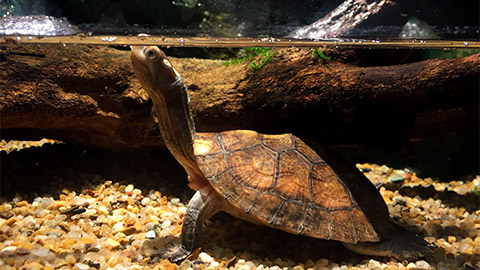
Snakes
Domain – Eukaryota
Kingdom – Animalia
Phylum -Chordata
Class – Reptilia
Order –Squamata
Family – Serpentes
Genus – Naja
Species – Naja Naja (Indian Cobra
Snakes are part of the Reptile family. Some features of snakes include:
- Body Shape and Size: Snakes have elongated, cylindrical bodies with no limbs. Their size can vary significantly, from tiny species measuring just a few centimetres to large constrictors exceeding several meters in length.
- Scales: Snakes are covered in overlapping scales, which help them move, protect their bodies, and reduce water loss. Depending on the species, the scales can be smooth or keeled (ridged).
- Eyes and Vision: Most snakes have fixed, transparent eyelids, or "spectacles," that protect their eyes. Vision varies by species, with some snakes having excellent eyesight while others rely more on other senses.
- Jaws and Fangs: Snakes have highly flexible jaws that allow them to swallow prey larger than their heads. Some species have specialized fangs for injecting venom, while others have sharp teeth for gripping prey.
- Tongue and Senses: Snakes use their forked tongues to collect scent particles from the air, which they then process using the Jacobson's organ (or vomeronasal organ) in the roof of their mouths. This allows them to "smell" their environment.
Most snakes kept as pets are part of the python family. Pythons are identified by the following factors.
- They often have vibrant patterning in wavey stripes, spots, or blotches (although there are some plain colour varieties such as the Olive Python).
- They are non-venomous, constricting hunting technique.
- They have large triangular-shaped heads.
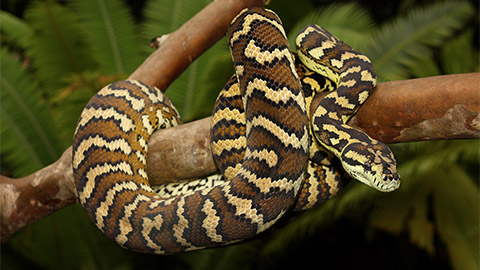
Australian Snakes
Australia is home to a wide variety of snake species, many of which are unique to the continent. Here are some examples:
Venomous Snakes
- Inland Taipan (Oxyuranus microlepidotus): Also known as the "fierce snake," the Inland Taipan is considered the most venomous snake in the world. It is found in arid regions of central Australia and is highly reclusive.
- Eastern Brown Snake (Pseudonaja textiles): Commonly found in eastern Australia, this snake is highly venomous and responsible for most snakebite fatalities in Australia. It prefers open grasslands and farmland.
- Coastal Taipan (Oxyuranus scutellatus): Found along the northern and eastern coasts, the Coastal Taipan is another highly venomous species known for its fast and aggressive behavior when threatened.
- Tiger Snake (Notechis scutatus): Found in southern Australia, including Tasmania, Tiger Snakes are highly venomous and are usually found near water bodies such as rivers and wetlands.
- Death Adder (Acanthophis spp.): Resembling a viper, the Death Adder is a highly venomous snake found across Australia. It is known for its ambush hunting style, lying in wait for prey.
Non- Venomous Snakes
- Carpet Python (Morelia spilota): Common throughout Australia, this large, non-venomous snake is often found in urban areas as well as forests and woodlands. Carpet Pythons are popular in the pet trade and are known for their striking patterns.
- Children’s Python (Antaresia children): A small, non-venomous python found in northern Australia, Children’s Pythons are known for their gentle temperament and are often kept as pets.
- Diamond Python (Morelia spilota spilota): A subspecies of the Carpet Python, the Diamond Python is found in coastal areas of New South Wales. It is known for its beautiful diamond-like pattern.
- Woma Python (Aspidites ramsayi): Native to central and western Australia, the Woma Python is a non-venomous snake that prefers arid and semi-arid regions. It is distinctive for its broad head and smooth scales.
Lizards
Lizards are part of the reptile family. There are four Families of lizards found in Australia: Dragons, Geckos, Skinks, and Monitors. Some characteristics of a lizard include:
- Body shape and size: Lizards typically have elongated bodies with four legs, although some species have fewer limbs. Sizes range from tiny geckos to large monitor lizards.
- Scales: Lizards are covered in scales, which can be smooth or rough depending on the species. These scales help reduce water loss and provide protection.
- Tail: Many lizards have long tails, which can serve multiple purposes, such as balance, defence, and fat storage. Some lizards can drop their tails to escape predators, a process called autotomy.
- Eyes and Vision: Lizards generally have well-developed vision, often with colour vision. Some species can move their eyes independently, and others have a "third eye" (parietal eye) for detecting light and shadows.
- Tongue and Senses: Like snakes, lizards often use their tongues to sense their environment. Some, like chameleons, have long, sticky tongues for catching prey, while others have forked tongues for scent detection.
- Diet: Lizards can be insectivorous, herbivorous, or omnivorous. Their diet varies depending on the species, habitat, and food availability.
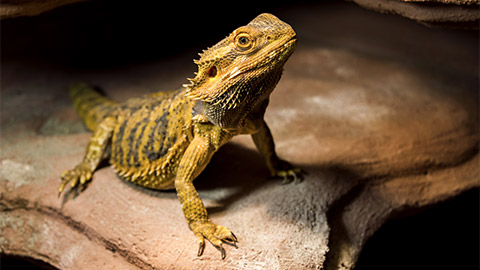
Australian Lizards
Dragons
- Bearded Dragon (Pogona spp.): One of the most popular pet lizards, Bearded Dragons are found across Australia in arid and semi-arid regions. They are known for their "beard," which puffs up when they are threatened or displaying dominance.
- Frilled-Neck Lizard (Chlamydosaurus kingii): Native to northern Australia, this lizard is famous for the large frill around its neck, which it can flare out to scare off predators or rivals. It is arboreal and often found in savannahs and woodlands.
- Centralian or Inland Bearded Dragon (Pogona vitticeps): This species is found in the central deserts of Australia and is known for its hardy nature and ability to thrive in extreme conditions.
Geckos
- Marbled Gecko (Christinus marmoratus): Common in southern Australia, this small gecko is nocturnal and often found in urban areas, where it hides under bark, rocks, and in crevices.
- Leaf-Tailed Gecko (Saltuarius spp.): Found in the rainforests of northern Queensland, these geckos have incredible camouflage, resembling leaves or bark. They are nocturnal and arboreal.
- Knob-Tailed Gecko (Nephrurus spp.): These unique geckos, found in arid regions of Australia, have a distinct knob at the end of their tails. They are ground-dwelling and nocturnal.
Skinks
- Blue-Tongue Skink (Tiliqua spp.): One of Australia’s most iconic lizards, Blue-Tongue Skinks are found across the continent. They are known for their distinctive blue tongues, which they display as a threat to predators.
- Shingleback Skink (Tiliqua rugosa): Also known as the "Sleepy Lizard" or "Bobtail," this skink has a thick, armored body and a short, stumpy tail. It is slow-moving and often seen in arid and semi-arid regions.
- Cunningham’s Skink (Egernia cunninghami): Found in southeastern Australia, this large skink has spiny scales and is often seen basking on rocks. It lives in social groups and is ovoviviparous (gives birth to live young).
Monitors (Goannas)
- Lace Monitor (Varanus various): One of Australia’s largest lizards, the Lace Monitor is found in eastern Australia. It is a powerful predator and scavenger, often seen in forests and woodlands.
- Perentie (Varanus giganteus): The largest monitor lizard in Australia, the Perentie is found in arid regions of central and western Australia. It is a highly skilled hunter, capable of taking down large prey.
- Sand Goanna (Varanus gouldii): Also known as Gould’s Monitor, this species is widespread across Australia, particularly in desert and semi-arid regions. It is known for its speed and agility.
Legless Lizards
- Burton’s Legless Lizard (Lialis burtonis): Found throughout Australia, this legless lizard resembles a snake but has external ear openings and eyelids, distinguishing it from true snakes. It feeds primarily on other lizards.
- Western Hooded Scaly-Foot (Pygopus nigriceps): This legless lizard is found in arid and semi-arid regions of Western Australia. Despite its appearance, it is closely related to geckos and has a distinctive head shape.
Watch
Let's explore some more information about reptiles and reptiles as pets.
Considerations for animals kept in captivity
Reptiles need to have a unique set of requirements that differ from other animal species to help them with longevity living in captivity. Some of these considerations include:
- Housing: Depending on the type of reptile, specific housing enclosures require some specific requirements like heating, lighting, humidity control, space, as well as various enrichment activities like water, rocks, decor, etc.
- Exercise & Enrichment: In the habitats, they will need climbing structures, hiding spots, space for movement, water play, and habitat decor like sand, sticks, bark, leaves, rocks, bushes/ shrubs, etc.
- Social and Emotional Needs: Some species are more solitary than others so having an environment that they can explore and move around, some species may need limited social interaction.
Watch
The next video is a Reptile room Tour at someones home explaining how they keep the pets and the set ups they need to help them thrive and survive.
The next video is a quick explanation on how a pet shop cares and takes care of the reptiles and the considerations they take.
Domain – Eukaryota
Kingdom – Animalia
Phylum -Chordata
Class – Actinopterygii
Order –Perciformes
Family – Cichlidae
Genus – Cichla
Species – Cichla ocellari
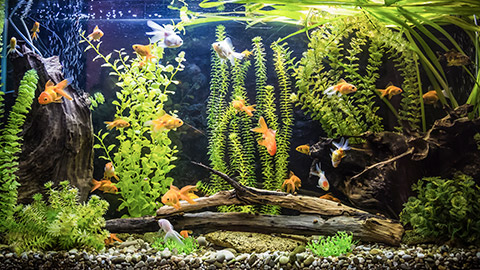
There are two broad categories of aquarium fish: Freshwater and Saltwater (marine) - and within each of these categories are cold-water and tropical varieties.
Coldwater fish are suitable for coldwater aquariums, but tropical fish need heated water. Outdoor pond fish are normally of the freshwater-cold-water type.
Tropical freshwater fish include Patties, Swordtails, Guppies, and Mollies.
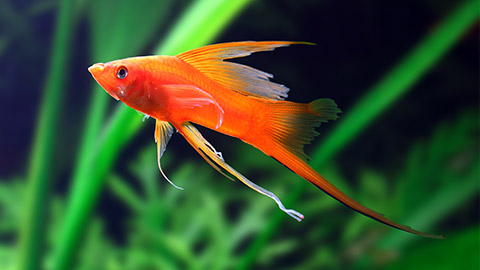
Common cold-water fish varieties include Goldfish, Comets, Shubunkins, and Fantails.
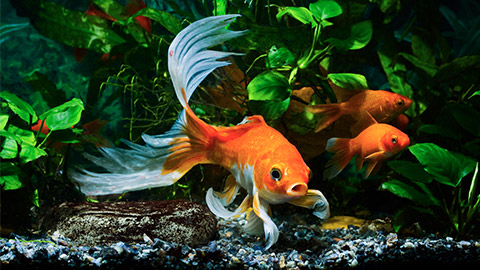
Watch
The next video is a video that explains the 30 best freshwater fish species that are used in aquariums. These fish would be potential species you may encounter in your role caring for animals.
Domain – Eukarya
Kingdom – Animalia
Phylum -Chordata
Class – Mammalia
Order –Perissodactyla
Family – Equidae
Genus – Equus
Species – Equus feru

Horses can be kept as companion animals or as workhorses.
The most common breeds found in Australia include:
- Australian Draught Horse
- Australian Pony
- Australian Riding Pony
- Australian Stock Horse
- Coffin Bay Pony
- Waler Horse
Horses can be described by their height, sex, colour & markings, and whirls.
The standard measurement of horses is the ‘hand’. One (1) hand is equivalent to 4 inches or 10cm.
The height of a horse is measured from the floor to the highest point of the withers.
Unlike cats and dogs, sex is not just categorised by male or female. Depending on the horse's age, the name or sex of the horse is identified as will be determined.
The sex of a horse is determined by the following.
- Mares are females over the age of 3.
- Stallions are uncastrated males over the age of 3.
- Geldings are castrated males of any age.
- Colts are males up to the age of 3.
- Fillies are females up to the age of 3.
Horses may also be referred to as Foals or Yearlings. Foals are any horses that age from birth to 1 year. Yearlings are any horses between 1-2 years of age.
Colour is another important characteristic of a horse. It is important to keep records up to date, especially with the colour of a horse. It is common for a horse to change colour as they mature. For example, a horse may be born black but turn grey within a few years. The most common colours seen in horses include:
- Black
- Dark Bay
- Light Bay
- Liver Chestnut
- Chestnut
- Dun
- Roan
- Palomino
- Piebald
- Skewbald
- Dapple Gray
- Flea bitten Gray
- Albino
Horses also have a patch of hair that grows in the opposite direction to the rest of the coat. This patch of hair is called a Whirl. The Whirl is commonly found in the stomach, face, neck, and sometimes the stifle or hock areas. The Whirl is permanent and does not change throughout the horse’s life.
Caring for horses is a full-time task. Sometimes, you may need to care for horses that could be affected by ailments. These can include:
- Horses can contract various diseases like equine infuenza, equine herpesvirus, strangles and laminitis
- Some injuries/ ailments that Horses can suffer from include colic, arthritis, respiratory issues (heaves) and hoof abscesses
- Being an active animal, they can get severe injuries like fractures, lacerations, tendon and ligament issues
- Horses can also suffer from obesity depending on the environment they are housed in, stress from isolation and behavioural issues from lack of stimulation and exercise
Watch
The next video is an explanation of the Brumby Horses of Australia.
The next video is a short video explaining horses and farming in Australia.
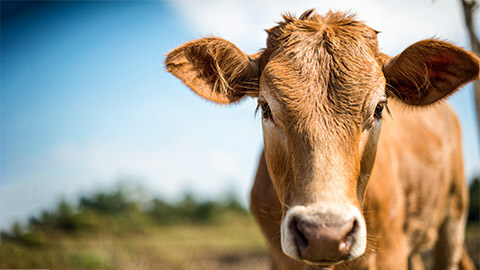
Livestock are animals used for commercial or economic purposes. These animals live on farms.
Livestock animals include but are not limited to:
- Cows
- Sheep
- Pigs
- Goats
- Alpacas
Livestock animals are generally categorised into industries. These industries include:
- Beef industries
- Sheep industries
- Dairy industries
- Pork industries
Livestock are bred and sold for the goods they produce. For example, a cow would be sold for beef in supermarkets, or sheep wool would be sold to produce blankets or clothing items.
Like any other animal, these animals can be identified by age, weight, colouring, markings, or patterns.
Permanent identification methods may include branding, tattoos, ear tags, ear notchs, or marking using paint.
Some Australian breeds of Livestock include:
Cows
- Australian Hereford - A popular breed known for its hardiness and good meat quality.
- Characteristics: Australian Herefords are known for their hardiness and adaptability, and they are excellent for beef production. They have distinctive red and white colouring and are well-suited to a variety of Australian climates.
- Murray Grey - Developed in Victoria, it is known for its excellent meat quality and adaptability.
- Characteristics: Developed in Victoria, the Murray Grey is a grey or silver breed that is highly regarded for its high-quality, marbled beef. They are calm, easy to handle, and adaptable to various environmental conditions.
- Australian Braford - A crossbreed of Hereford and Brahman, known for its resilience in tropical climates.
- Characteristics: A cross between Hereford and Brahman, Brafords are known for their resilience in tropical climates, disease resistance, and excellent beef quality. They are typically red with a white face.
- Droughtmaster - A breed developed in Queensland, known for its drought resistance and suitability to northern Australia.
- Characteristics: Developed in Queensland to thrive in hot, arid conditions, Droughtmasters are heat-tolerant, resistant to ticks, and produce high-quality beef. They have a distinctive red colour.
- Australian Red - A dairy breed known for its adaptability to Australian conditions and good milk production.
- Characteristics: A dairy breed that combines genetics from various European breeds, Australian Reds are known for their good milk production, longevity, and adaptability to Australia’s varied climates.
Sheep
Domain – Eukaryota
Kingdom – Animalia
Phylum -Chordata
Class – Mammalia
Order –Artidactyla
Family – Bovidae
Genus – Ovis
Species – Ovis Arie
- Merino - Australia’s most famous sheep breed, renowned for its fine wool.
- Characteristics: The most famous Australian sheep breed, Merinos are renowned for their fine wool, which is highly sought after worldwide. They are hardy and well-suited to Australia’s diverse climates.
- Poll Dorset - Developed in Australia, known for its meat quality and fast growth rate.
- Characteristics: Developed in Australia, Poll Dorsets are known for their rapid growth rate and high-quality lamb meat. They have a muscular build and are polled (naturally without horns).
- Australian White - A hair sheep breed, known for its meat and self-shedding coat, reducing the need for shearing.
- Characteristics: A hair sheep breed that sheds its coat naturally, reducing the need for shearing. Australian Whites are known for their excellent meat quality and ability to thrive in various environments.
- Corriedale - A dual-purpose breed, producing both meat and wool, well-suited to Australian conditions.
- Characteristics: A dual-purpose breed producing both meat and wool. Corriedales are hardy, adaptable, and have a good temperament, making them well-suited to Australian conditions.
- Bond - Developed in New South Wales, known for its good wool quality and adaptability.
- Characteristics: Developed in New South Wales, Bond sheep are known for their good wool quality and adaptability to a range of environmental conditions. They are also valued for their good meat production.
Pigs
- Large White - Common in Australia, known for its excellent bacon production and large size.
- Characteristics: A large, white pig breed known for its excellent bacon production. Large Whites have a long, lean body and are commonly used in commercial pig farming in Australia.
- Landrace - Known for its good mothering ability and lean meat, widely used in commercial production.
- Characteristics: Known for their long bodies and good mothering abilities, Landrace pigs produce lean meat and are widely used in crossbreeding for commercial pork production.
- Berkshire - A heritage breed known for its high-quality marbled meat and friendly temperament.
- Characteristics: A heritage breed with black fur and white markings, Berkshire pigs are prized for their high-quality, marbled meat. They have a friendly temperament and are well-suited to free-range farming.
- Wessex Saddleback - Known for its distinctive black and white coloring, valued for its pork quality.
- Characteristics: Known for their distinctive black color with a white "saddle" marking, Wessex Saddlebacks are valued for their pork quality and ability to thrive in outdoor, free-range systems.
- Tamworth - Known for its red color and lean meat, well-suited to free-range systems.
- Characteristics: A reddish-brown pig breed known for its lean, flavorful meat. Tamworth pigs are hardy and well-suited to outdoor, free-range systems, where they are excellent foragers.
Goats
- Australian Cashmere Goat - Bred for high-quality cashmere wool and adaptability to Australian conditions.
- Characteristics: Bred for high-quality cashmere wool, these goats are hardy and well-adapted to Australia’s variable climates. They are also known for their good meat production.
- Rangeland Goat - A wild breed found in Australia, known for its hardiness and low maintenance requirements.
- Characteristics: A wild or feral breed found in Australia, Rangeland goats are extremely hardy, requiring minimal management. They are primarily used for meat production and are resistant to diseases.
- Anglo-Nubian - A dual-purpose breed for milk and meat, known for its distinctive floppy ears.
- Characteristics: A dual-purpose breed known for both milk and meat production. Anglo-Nubians are easily recognizable by their long, floppy ears and Roman noses. They produce rich, creamy milk and are well-adapted to hot climates.
- Australian Miniature Goat - A small breed developed in Australia, popular as pets and for small-scale milk production.
- Characteristics: A small, friendly breed popular as pets and for small-scale milk production. These goats are known for their gentle temperament, making them ideal for families and hobby farmers.
- Boer Goat - A popular meat breed in Australia, known for its rapid growth and strong build.
- Characteristics: A popular meat breed in Australia, Boer goats are known for their rapid growth, muscular build, and high-quality meat. They are adaptable to various climates and have a distinct white body with a brown head.
Alpacas
- Australian Alpaca - Not a specific breed, but alpacas in Australia are bred primarily from Peruvian, Chilean, and Bolivian bloodlines. They are classified into two main types:
- Huacaya - The more common type, known for its dense, crimped fleece. Known for their dense, crimped fleece, which gives them a fluffy appearance. Huacayas are the more common type and are prized for their soft, warm wool.
- Suri - Known for its long, silky fleece that hangs in dreadlocks Known for their long, silky fleece that hangs in locks. Suris produce a lustrous fiber that is highly valued in the textile industry.
Watch
The next video shows what it is like working with livestock in a farm-like setting and what it entails.
Animals can also be identified using permanent identification methods. These are man-made devices, objects, or markings that can be used to determine who owns the animal.
Permanent identification methods include:
- Microchipping (companion animals)
-
Tattoos (Companion animals & livestock)
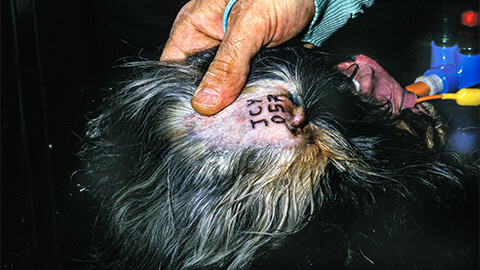
-
Branding (Livestock)

-
Ear or leg tags (Birds & Livestock)
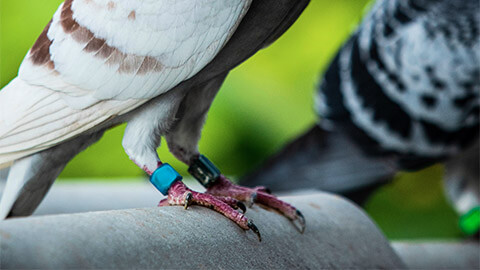
- Freeze branding (Livestock)
- Markings
-
Ear notches (Livestock)
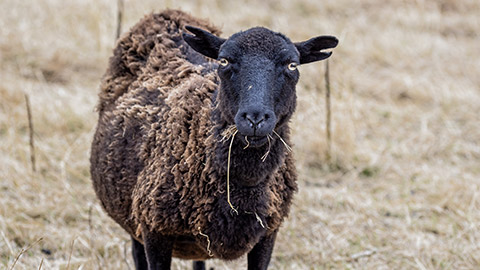
- Ear Tags
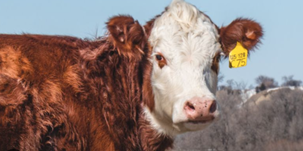
These methods are invasive and can cause a degree of pain for the animal when being placed.
